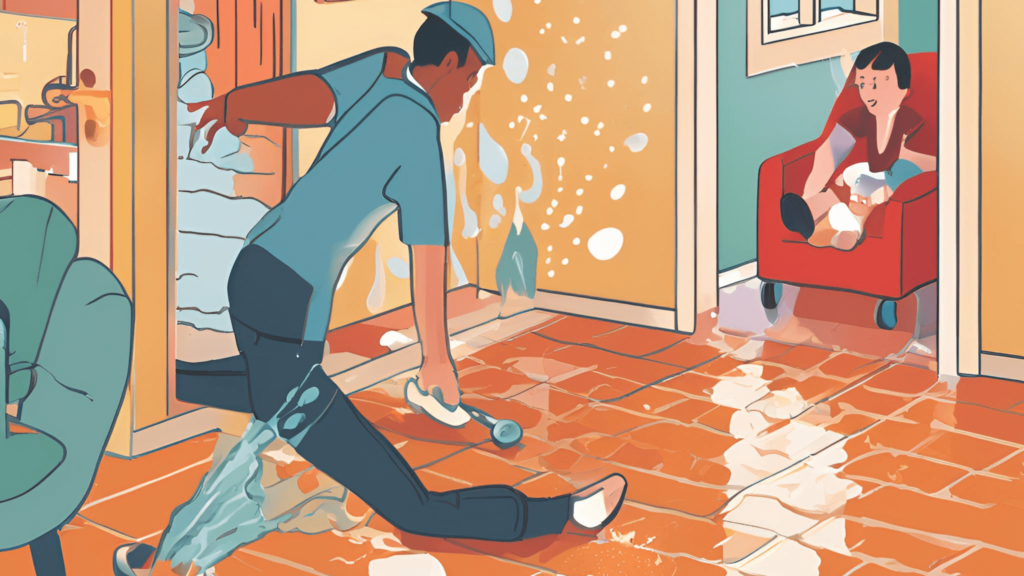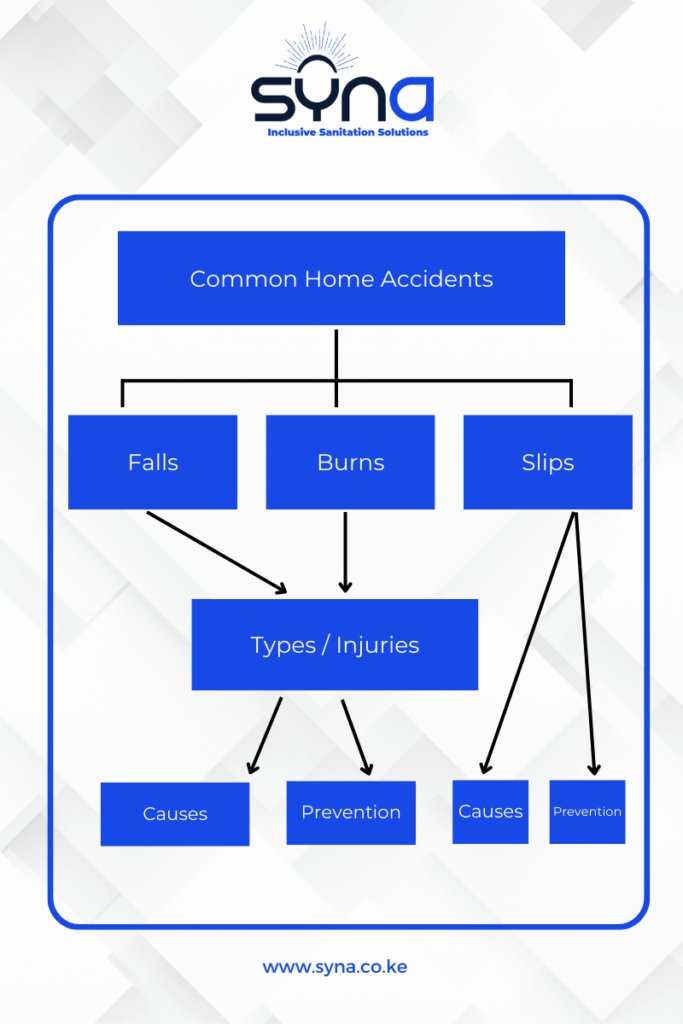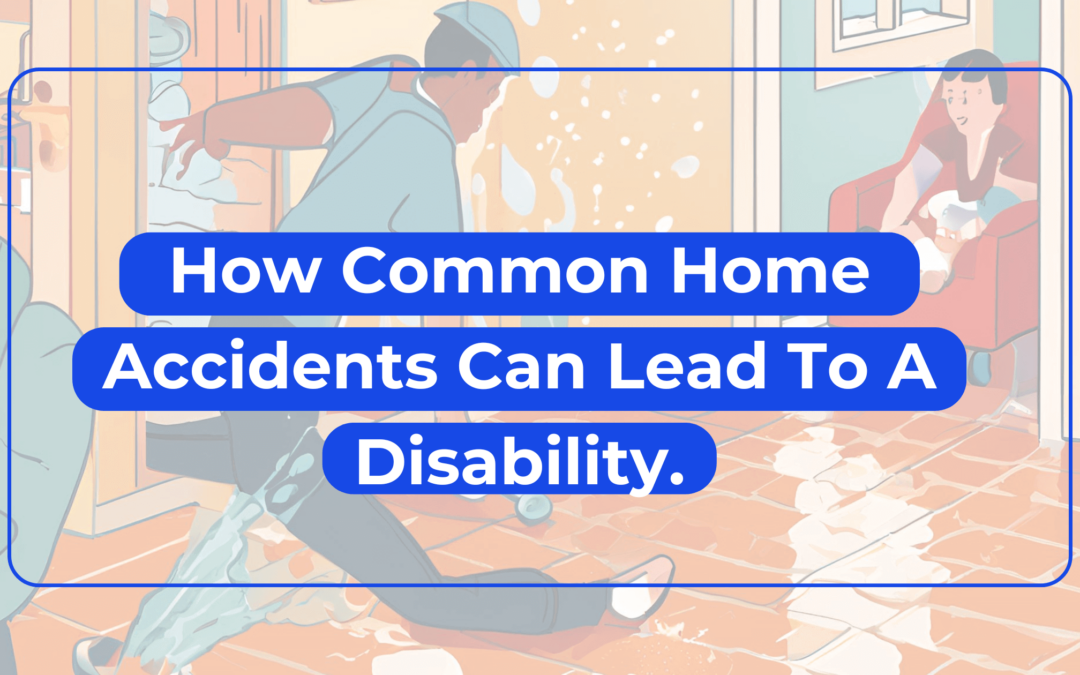
Home Accidents can lead to permanent disabilities. Understanding the most common types of home accidents and the populations most at risk can help individuals take proactive steps to prevent them.
Common Home Accidents
1. Falls
Falls and impacts are among the most common and potentially serious home accidents. They can occur in various settings, from the bathroom to the living room, and can result in a wide range of injuries, from minor bruises to severe fractures.
Common Causes of Falls at Home
- Slips: Slippery surfaces, such as wet floors, spilt liquids, or polished hardwood, can increase the risk of falls.
- Trips: Tripping over objects, loose rugs, or uneven surfaces can cause individuals to lose their balance and fall.
- Loss of Balance: Conditions such as dizziness, vertigo, or unsteady gait can contribute to falls.
- Medication Side Effects: Some medications can cause side effects that affect balance or coordination.
- Physical Limitations: Reduced strength, flexibility, or vision can increase the risk of falls, especially in older adults.
Common Injuries from Falls at Home
- Head Injuries: Falls can lead to concussions, traumatic brain injuries, or even fatalities.
- Fractures: Broken bones, especially in the hips, wrists, and ankles, are common injuries from falls that lead to temporary and sometimes permanent physical disabilities.
- Sprains and Strains: Injuries to ligaments and muscles can occur due to falls causing a disability.
- Soft Tissue Injuries: Bruises, cuts, and lacerations are common after falls and impacts.
How to Prevent Falls from occurring at home.
- Clear Pathways by removing clutter and tripping hazards from your home.
- Secure Rugs by using non-slip pads under rugs to prevent them from slipping.
- Good Lighting: Ensure adequate lighting in all areas of your home, particularly staircases and bathrooms.
- Grab Bars: Install grab bars in bathrooms, near stairs, and other areas where you need support.
- Home Safety Assessments: Consider having a professional conduct a home safety assessment to identify potential hazards.
- Regular Exercise: Physical activity can help improve balance, strength, and coordination. Physical exercises include long walks, jogging and yoga poses.
2. Burns
Burns are another common type of home accident, often caused by hot liquids, stoves, or electrical outlets. Severe burns can lead to significant scarring and disability.
The severity of a burn depends on factors such as the temperature of the heat source, the duration of contact, and the extent of the burn.
Types of Burns
- First-degree burns are superficial burns that affect only the outer layer of the skin. They are typically red, painful, and may blister.
- Second-degree burns damage both the outer and inner layers of the skin. They can cause severe pain, blistering, and swelling.
- Third-degree burns are deep burns that destroy the skin and underlying tissues. They can appear white, charred, or leathery.
How Burns Can Lead to Disability
- Scarring: Severe burns can lead to extensive scarring, which can limit mobility, cause pain, and affect a person’s appearance.
- Contractures: Scar tissue can contract, pulling the skin and underlying tissues together and limiting movement. This can lead to disabilities in the affected area.
- Infection: Burns can increase the risk of infection, further damaging tissues and leading to complications.
- Pain: Chronic pain can be a significant consequence of burns, even after the initial injury has healed.
- Psychological Impact: Burns can have a profound psychological impact, leading to depression, anxiety, and low self-esteem.
Preventing Burns
- Kitchen Safety: Use pot holders or oven mitts when handling hot cookware. Keep children away from hot stoves and ovens.
- Electrical Safety: Avoid overloading electrical outlets and use extension cords with caution.
- Chemical Safety: Store chemicals properly and wear protective gloves when handling them.
- Sun Safety: Use sunscreen with a high SPF and limit sun exposure, especially during peak hours.
- Fire Safety: Install smoke detectors and have a fire escape plan.
3. Slips as an Accident at Home
Slippery surfaces, such as wet floors or spills, can increase the risk of falls and injuries. They occur when there is a loss of traction between the foot and the surface, leading to a fall.
Common Causes of Slips
- Wet Surfaces: Rain, snow, or spilled liquids can create slippery surfaces.
- Icy Conditions: Ice can make surfaces extremely slippery, increasing the risk of falls.
- Loose Objects: Objects left on the floor can cause people to slip and fall.
- Poor Footwear: Footwear that lacks adequate traction can contribute to slips.
- Uneven Surfaces: Uneven or damaged surfaces can increase the risk of falls.
Preventing Slips
- Clear Pathways: Remove clutter and tripping hazards from floors and walkways.
- Wet Surfaces: Clean up spills immediately and use non-slip mats or rugs in areas prone to wetness.
- Icy Conditions: Use salt or sand to de-ice slippery surfaces.
- Proper Footwear: Wear footwear with good traction, especially in wet or icy conditions.
- Home Safety Assessments: Consider having a professional conduct a home safety assessment to identify potential slip hazards.

Populations at Risk of Disability from Common Accidents at Home.
While home accidents can affect anyone, certain populations are more vulnerable to experiencing disabilities as a result. Two primary groups face a heightened risk: children and the elderly.
Children
Children living in rural areas or informal settlements are disproportionately affected by home accidents. These accidents often result in severe injuries that can lead to lifelong disabilities.
When children are exploring their home surroundings, they may get into accidents that lead to physical or mental disabilities.
More often than not, when children are playing they are not adequately supervised and can increase the likelihood of accidents.
Children, especially young children may not fully understand the potential dangers of their environment.
Elderly and Seniors
Kenya’s aging population is growing and the elderly are at risk of home accidents whether living alone or with somebody else.
As people age, they may experience decreased strength, reduced vision, declined cognitive, chronic conditions and social isolation that increase the risk of falls and other accidents that lead to temporal or permanent need for assistive devices.
How to Prevent Home Accidents
- Bathroom Safety:
- Install grab bars near the bathtub, toilet and shower to provide support.
- Use nonslip mats in the bathtub and shower to prevent slips.
- Replace rough tiles with smoother surfaces to reduce the risk of falls.
- Kitchen Safety:
- Keep knives and other sharp objects stored safely in a designated drawer or block.
- Use pot holders or oven mitts when handling hot cookware.
- Never leave children unattended in the kitchen.
- Avoid overloading electrical outlets and use extension cords with caution.
- General Safety:
- Clean up spills immediately to prevent slips and falls.
- Secure rugs and carpets to prevent tripping hazards.
- Keep gas cylinders tightly closed and away from heat sources.
- Regularly inspect your home for potential hazards and address them promptly.
- implement childproofing measures to prevent access to dangerous areas and objects.
Conclusion
Home accidents are a significant public health concern that can have devastating consequences. By understanding the most common types of accidents, identifying at-risk populations, and implementing effective prevention measures, individuals can significantly reduce their risk of experiencing a disabling injury. It is essential to prioritize home safety and create a safe environment for all family members.

